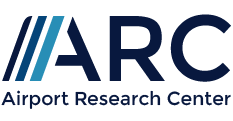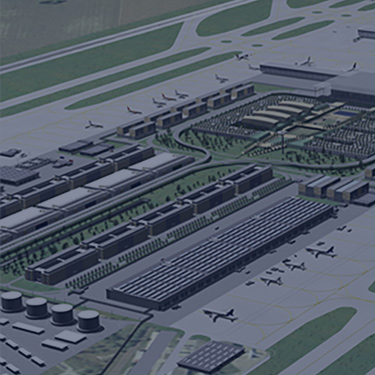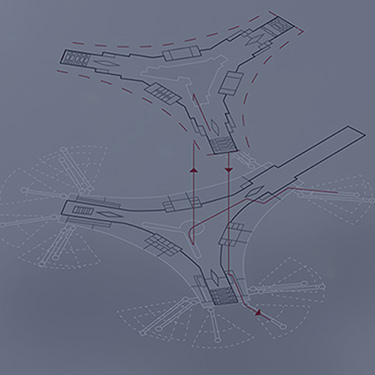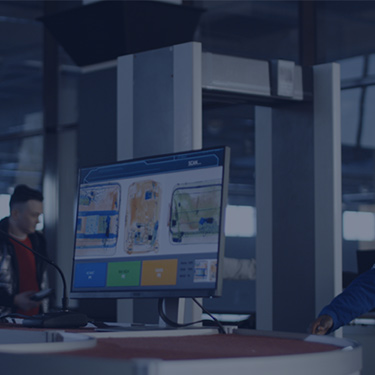Due to the Covid-19 pandemic nearly all sport events have been canceled. But now it is time to develop concepts how supporters can return to stadiums with respect to the current limitations and regulations. Or in other words: How does the New Reality look like in sports?
Obviously the main objective is to keep the recommended social distancing and overall reduce risky contacts. But how can this be done when thousands of people come together? Therefore responsible organisations like the German Football League (DFL) already work on guidelines for developing concepts for allowing spectators back into stadiums.
These safety and hygiene concepts include:
- Definition of different time frames for entry and exit
- Social distancing at check points
- Separation of zones
- Spectator flow management
- Concepts to reduce queues and bottlenecks
- Updated capacity assessment due to reduced capacites
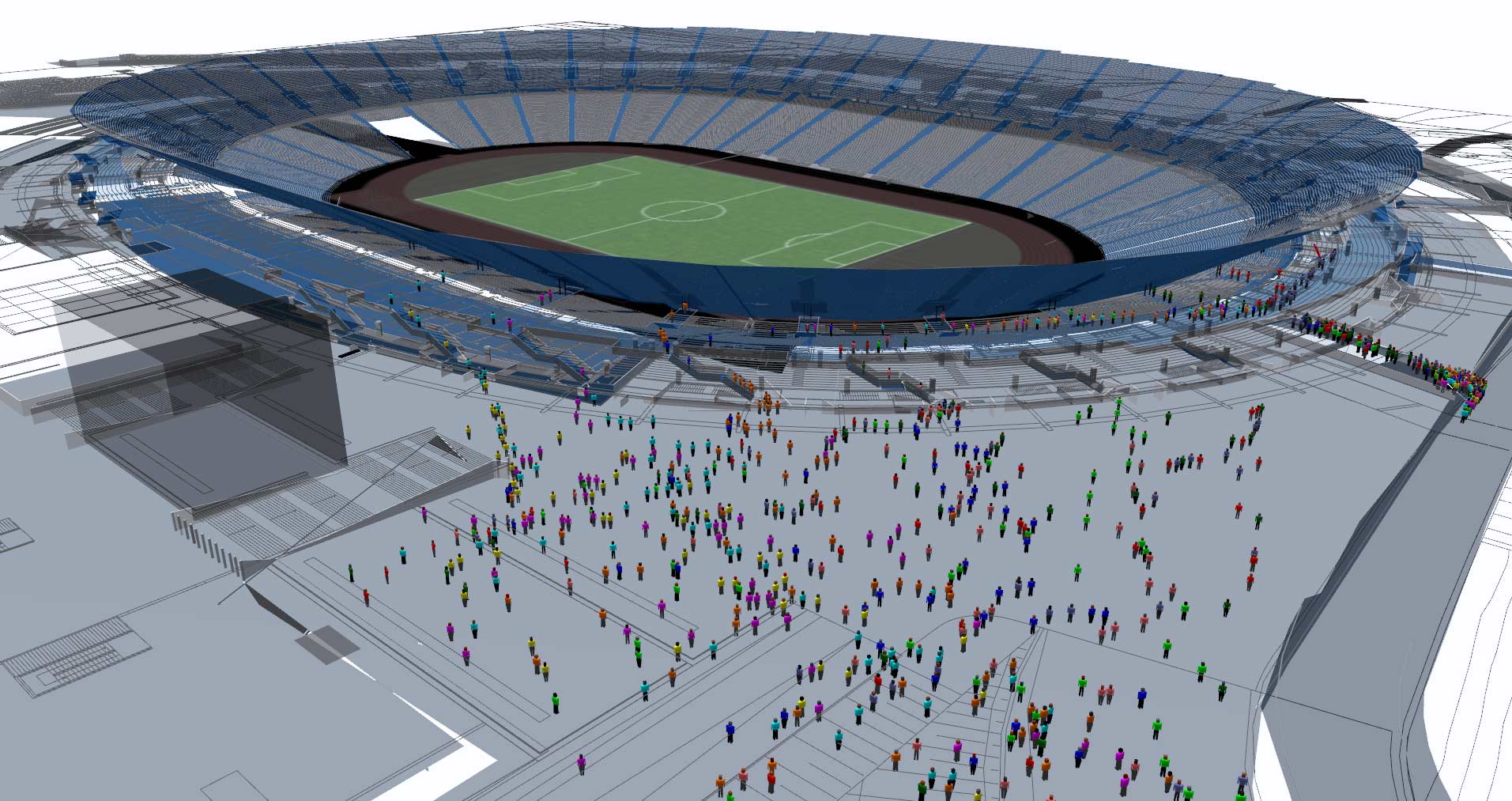
Therefore the capacity of the stadium and it’s sub-processes needs to be reevaluated under the updated conditions. Generally this is done with the help of a simple spreadsheet model calculation in Excel, which helps to get a first idea where the main bottleneck is located. But this can only be the first step to get the most out of your infrastructure and create a robust operational concept.
Simulation of Pedestrian Flows to Optimize Safety Concepts
The simulation of the pedestrian flows is the logical next step to test and optimize the first insights by adding a time based analysis component to the previous static analysis method. Now it is possible to see how the impact of walking distances and how they could lead to overlapping capacity loads which have not been visible before. Also queues length and waiting times at different checkpoints can be evaluated and optimized.
In addition the flow management becomes more and more important to reduce contacts. Here the concept to separate different sector zones comes as well as defined time frames for the entry and exit of the stadium comes into play. With the help of simulation it is possible to analyse and compare different operational scenarios to find the most efficient as well as cheapest solution for each case.
Benefits of simulation over spreadsheet models:
- Consider walking distances to avoid overlapping capacity load
- Analyse queue length and optimize queue management
- Test different time frames for entry and exit to separate flows
- Test and compare concepts for sector separation
- Meaningful visualization to discuss and convince stakeholder
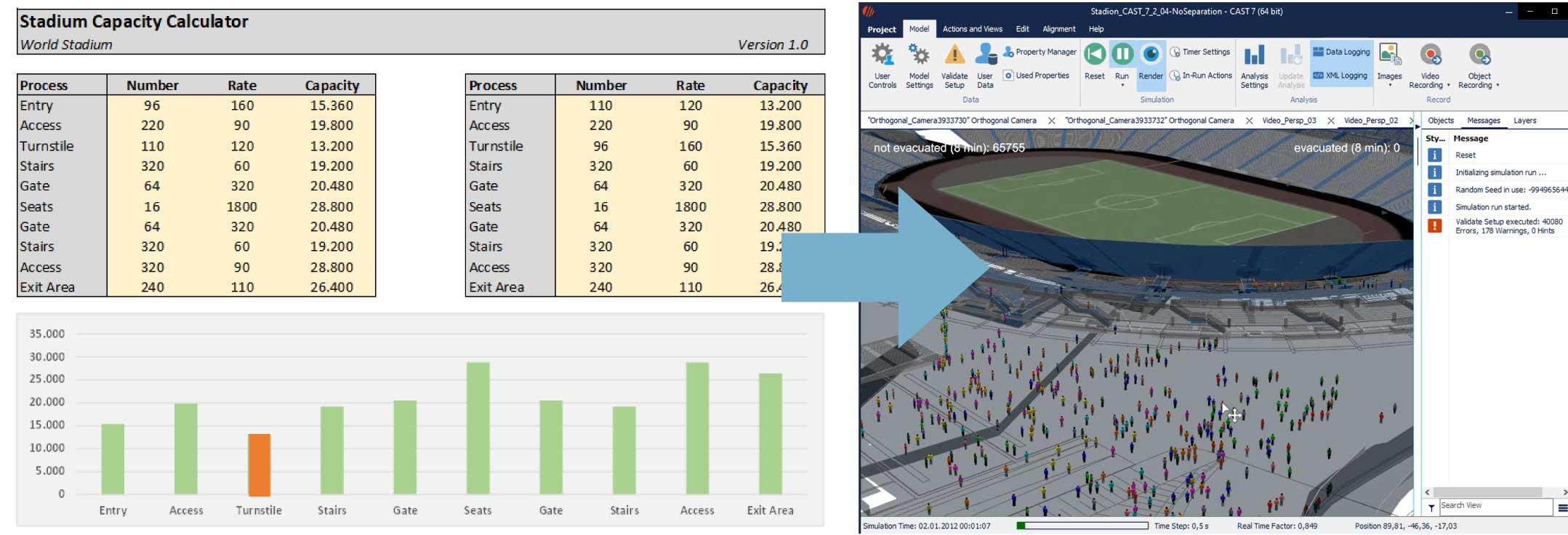
Increase the quality and robustness of your safety and hygiene concept to convince the public and invoved stakeholders.

With the help of the time based simulation you can:
- Determine impact of different time frames for entry and exit
- Detect and avoid bottlenecks and queues
- Calculate the required number of facilities (turnstiles etc.)
- Challenge your concept with different number of spectators
- Create sensitivity analysis of parameter for a robust concept
- Visualize your final concept with compelling images and videos
